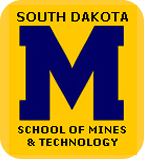 |
|
|
Glossary of Terms for SDSM&T Action Statement refers to a written and distributed statement prescribing program faculty members to change outcome assessment procedures, instructional content or procedures, curriculum, extracurricular activities and opportunities, or objective evaluation procedures with the intent of improving program quality.
Assessment Assessment under this criterion is one or more
processes that identify, collect, and prepare data to evaluate the achievement
of a program outcome or a program educational objective. Assessment Summary is a Microsoft Excel document consisting of a Table
and a Chart onto which all Program Outcomes results are organized for one
academic year. Assessment Triangulation is the use of three assessment methods to obtain a
more meaningful assessment than possible from any one assessment method. Course Objectives are statements about the broad educational goals of a
course. Course Outcomes are statements that describe what students are expected
to know, attitudes they are expected to hold, and what they are able to do as a
result of taking a course Evaluation is one or more processes for interpreting the data and
evidence accumulated through assessment practices. Goal The terms “goal” and “objectives” are used
interchangeably. Grand Summary is a Microsoft Excel document that shows the
assessment results for all outcomes over all years, any one outcome over time,
or all outcomes for any selected year. Instrument is the collection of a specific document, one per
student or team, used to assess a Program Outcome. Examples of the
specific document may be a completed homework assignment or an exam, faculty
member-completed oral presentation assessment form, or students’ standardized
exam results. Instrument Inventory is the collection of all instruments used to assess
all Program Outcomes. Metrics refers to the system of Performance Criteria used to
arrive at numerical measures of student satisfaction of Program Outcomes. Performance Criteria are measurable attributes that define each of the
educational outcomes. Program Educational
Objectives are broad statements that describe the career and
professional accomplishments that the program is preparing graduates to
achieve. Program Outcomes are statements that describe what students are expected
to know, attitudes they are expected to hold, and what they are able to do by
the time of graduation. (Achievement of program outcomes should indicate
the student is equipped to achieve the Program Educational Objectives.) Outcome Review is a Microsoft Excel worksheet onto which a designated
Met Eng faculty member documents his critical review of a selected Program
Outcome for a specified academic year and includes actions needed. Outcome Review Summary is a Microsoft Excel worksheet that contains a
complete sequential history of the evaluation, actions, and results for one
outcome review for all years. Outcome Summary is a Microsoft Excel table document for a specified
Program Outcome onto which the all the Score Card assessment results for the
specified outcome are summarized and tabulated for one calendar year. Quality Function Deployment
Matrix refers to map of outcomes to established functions, such
as courses, student advisement, career fairs, field trips that influence the
degree to which one or more program outcomes are achieved. Score Card is a Microsoft Excel table document on which the
Program Outcome assessment results for one instrument are recorded. These
are typically completed by one designated faculty assessor. |